Application of the Kinematic Assessment of Multi-Faced Slopes Using Stereographic Projection: The Case Study of a Planar Failure on the Spondylus Coast, Ecuador
Abstract
1. Introduction and Scope
2. Materials and Methods
3. Study Site
4. Results
4.1. Observational Results
4.2. Planar Failure in the Two-Faced Cliff of Punta Barbasquillo Cape in Manta (Ecuador)
4.3. Kinematic Assessment
5. Discussion
6. Conclusions
Author Contributions
Funding
Institutional Review Board Statement
Informed Consent Statement
Data Availability Statement
Conflicts of Interest
References
- Jordá-Bordehore, L.; Jordá-Bordehore, R.; Romero-Crespo, P.L. Kinematic assessment of multi-face round slopes using hemispherical projection methods (HPM). Soils Rocks 2016, 39, 167–176. Available online: https://www.scopus.com/inward/record.uri?eid=2-s2.0-85021016216&partnerID=40&md5=28a6c438faa7b680ecced3520cf1509c (accessed on 7 July 2023). [CrossRef]
- Markland, J.T. A useful technique for estimating the stability of rock slopes when the rigid wedge sliding type of failure is expected. Imp. Coll. Rock Mech. 1972, 10, 10. [Google Scholar]
- John, K.W. Graphical stability analysis of slopes in jointed rock. J. Soil Mech. Found. Div. 1968, 94, 497–526. [Google Scholar] [CrossRef]
- John, K.W. Graphical Methods for Slope Stability Analysis. In Rock Mechanics. International Centre for Mechanical Sciences; Springer: Vienna, Austria, 1972; pp. 221–239. [Google Scholar]
- Yoon, W.S.; Jeong, U.J.; Kim, J.H. Kinematic analysis for sliding failure of multi-faced rock slopes. Eng. Geol. 2002, 67, 51–61. [Google Scholar] [CrossRef]
- Hudson, J.; Harrison, J. Engineering Rock Mechanics—An Introduction to the Principles; Pergamon, E., Ed.; Imperial College: London, England, 1997. [Google Scholar]
- Wyllie, D.C.; Mah, C.W. Rock Slope Engineering. Civil and Mining; CRC Press: New York, NY, USA, 2004. [Google Scholar]
- Lisle, R.J. Calculation of the daylight envelope for plane failure of rock slopes. Geotechnique 2004, 54, 279–280. [Google Scholar] [CrossRef]
- Lisle, R.J.; Leyshon, P.R. Stereographic Projection Techniques for Geologists and Civil Engineers; Cambridge University Press: Cambridge, UK, 2004; ISBN 0521535824. [Google Scholar]
- Delgado-Reivan, X.; Paredes-Miranda, C.; Loaiza, S.; Echeverria, M.D.P.V.; Mulas, M.; Jordá-Bordehore, L. Stability Analysis of Rocky Slopes on the Cuenca–Girón–Pasaje Road, Combining Limit Equilibrium Methods, Kinematics, Empirical Methods, and Photogrammetry. Remote Sens. 2023, 15, 862. [Google Scholar] [CrossRef]
- Villalta Echeverria, M.D.P.; Viña Ortega, A.G.; Larreta, E.; Romero Crespo, P.; Mulas, M. Lineament Extraction from Digital Terrain Derivate Model: A Case Study in the Girón–Santa Isabel Basin, South Ecuador. Remote Sens. 2022, 14, 5400. [Google Scholar] [CrossRef]
- Flor-Jiménez, M.; Avilés-Moran, H.; Villalta-Echeverría, M.; Murillo-Lozano, I.; Escobar-Segovia, K.; Mulas, M. Geotechnical and structural characterization of the Ignimbritas of the Saraguro group in the sector of Santa Isabel-Pucará, Ecuador [Caracterización geotécnica y estructural de las Ignimbritas del grupo Saraguro en el sector de Santa Isabel-Pucará, Ecuado]. In Proceedings of the LACCEI international Multi-conference for Engineering, Education and Technology, Montego Bay, Jamaica, 24–26 July 2019. [Google Scholar]
- Barton, N.; Bandis, S. Review of predictive capabilities of JRC-JCS model in engineering practice. In Proceedings of the Rock joints: Proceedings of the International Symposium on Rock Joints, Loen, Norway, 4–6 June 1990; pp. 603–610. [Google Scholar]
- Barton, N.; Bandis, S. Effects of Block Size on The Shear Behavior of Jointed Rock. In Proceedings of the Proceedings—Symposium on Rock Mechanics, Berkeley, CA, USA, 25–27 August 1982; pp. 739–760. Available online: https://www.scopus.com/inward/record.uri?eid=2-s2.0-0020287706&partnerID=40&md5=5d336118bb29748ae5eee8962f78b3ca (accessed on 7 July 2023).
- Bordehore, L.J.; Riquelme, A.; Cano, M.; Tomás, R. Comparing manual and remote sensing field discontinuity collection used in kinematic stability assessment of failed rock slopes. Int. J. Rock Mech. Min. Sci. 2017, 97, 24–32. [Google Scholar] [CrossRef]
- Dips Version 5.0 Graphical and Statistical Analysis of Orientation Data; Rocscience Inc.: Toronto, ON, Canada, 2001; Available online: https://www.rocscience.com (accessed on 7 July 2023).
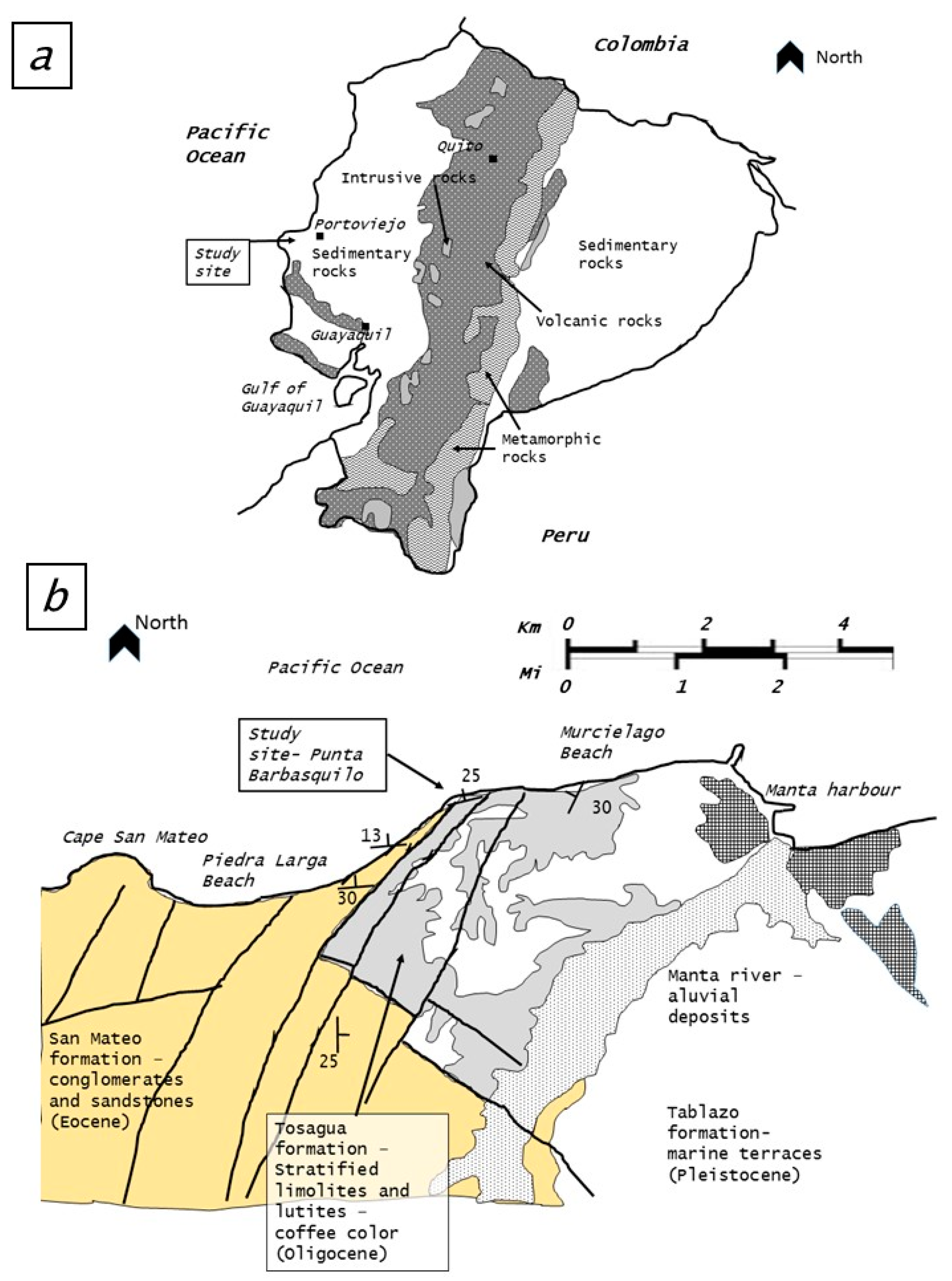
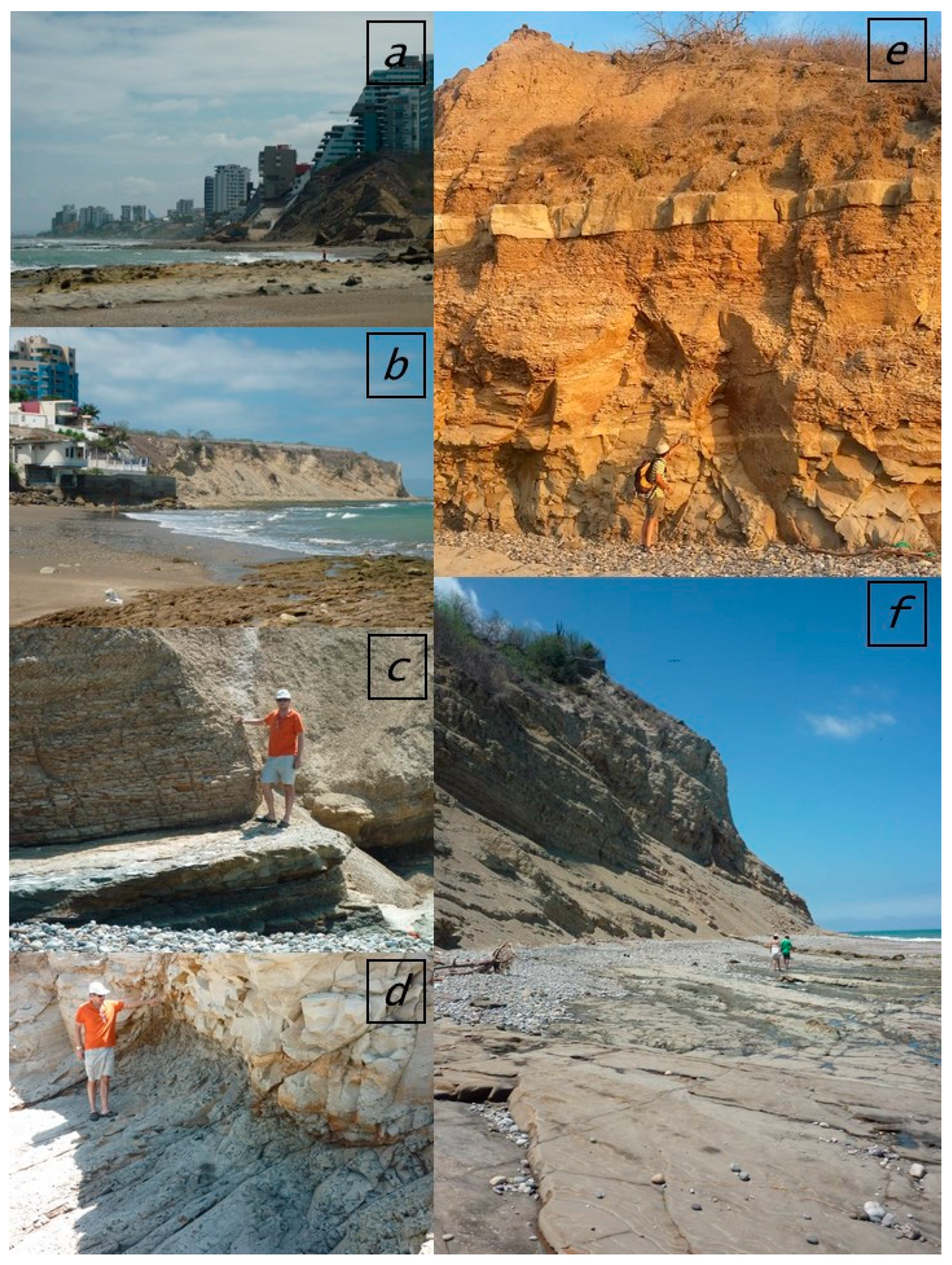
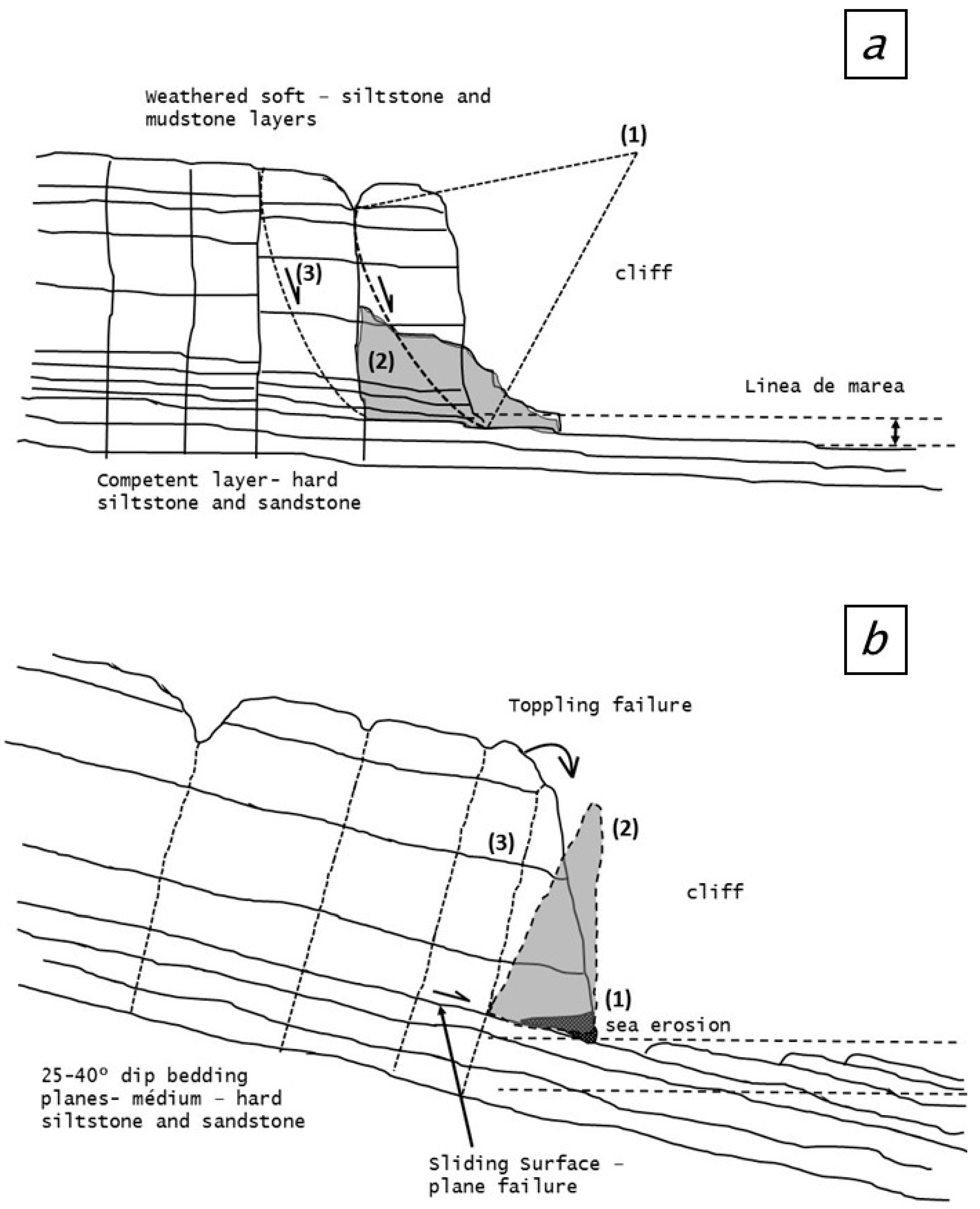
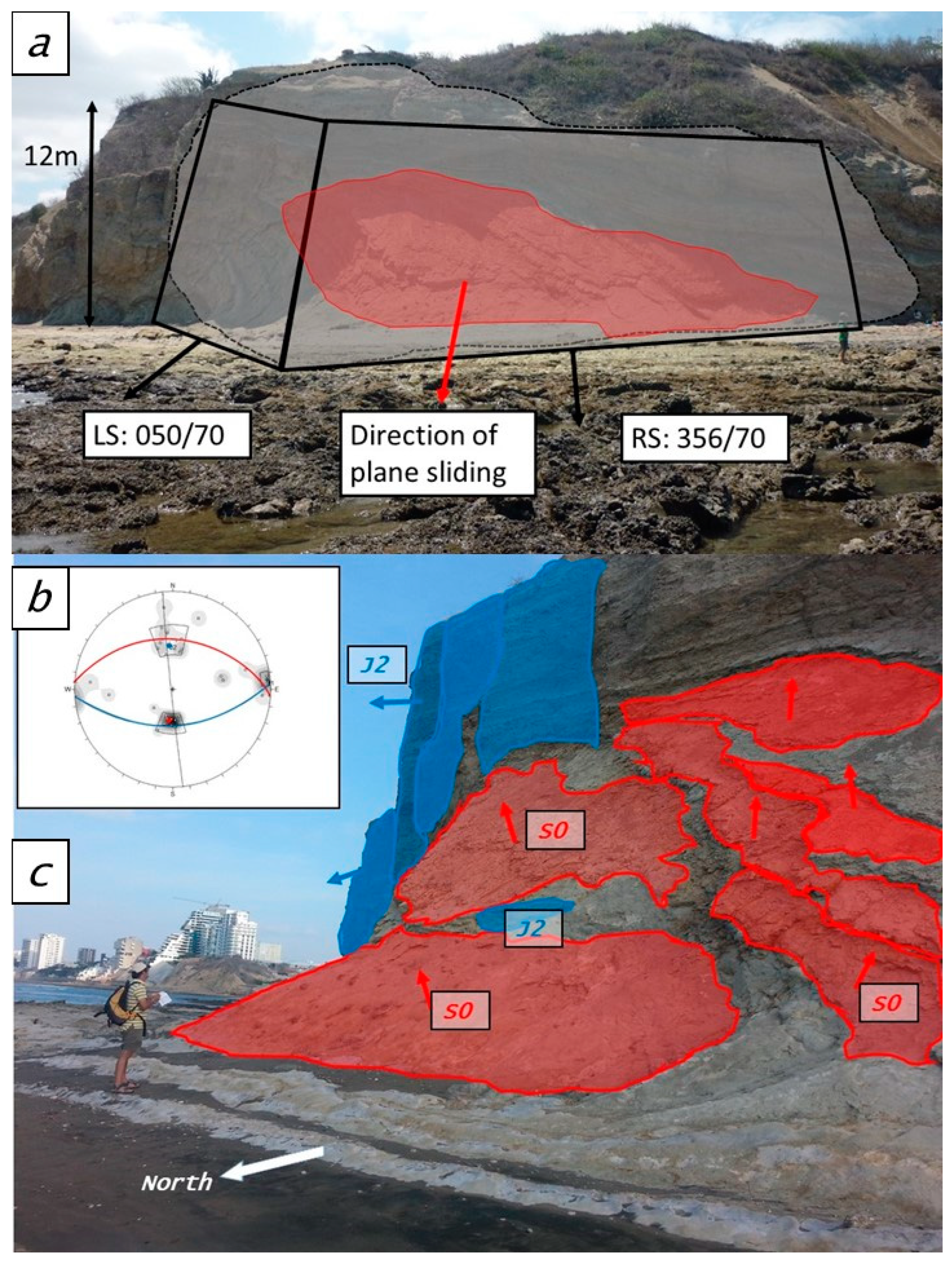
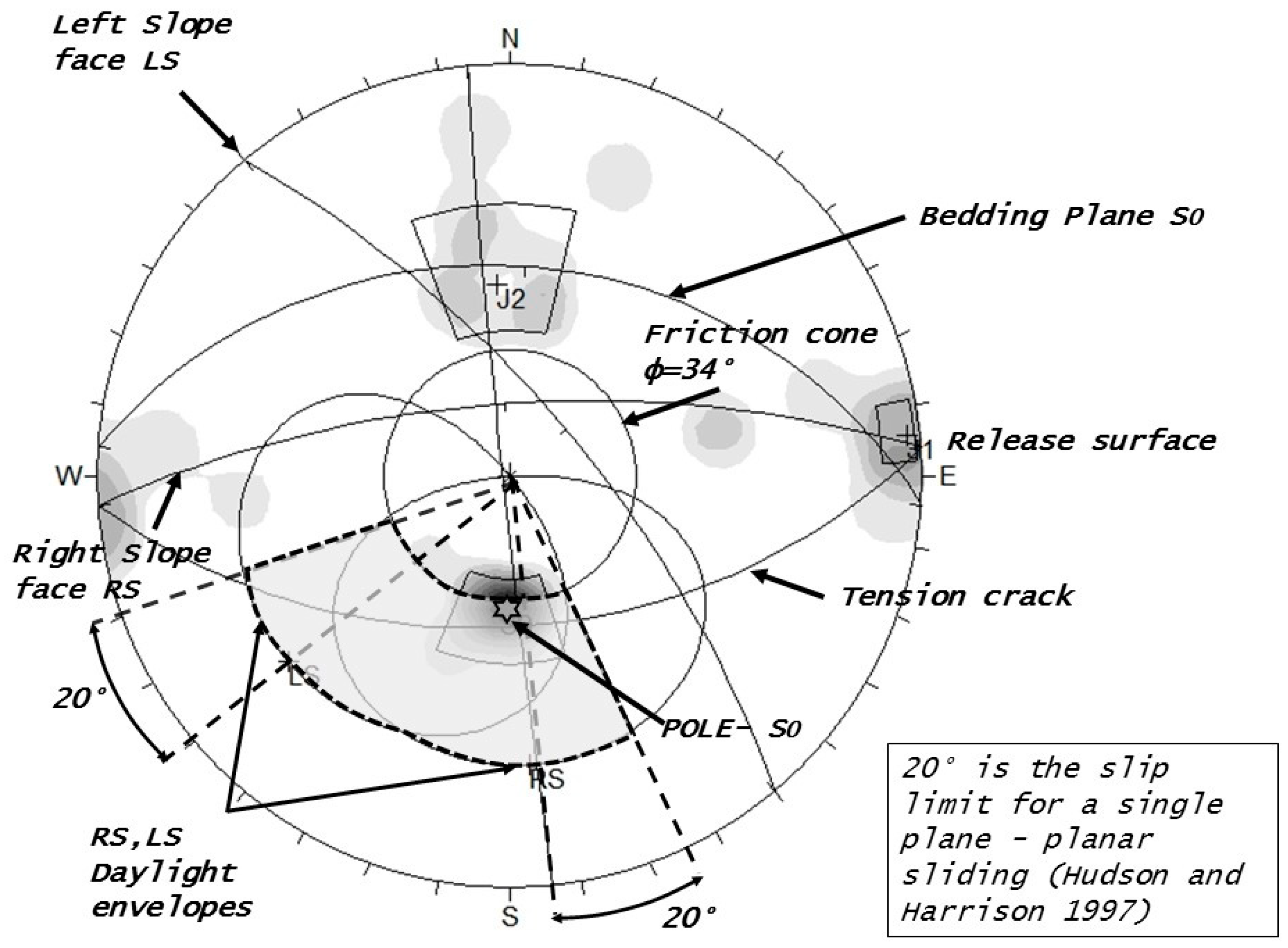
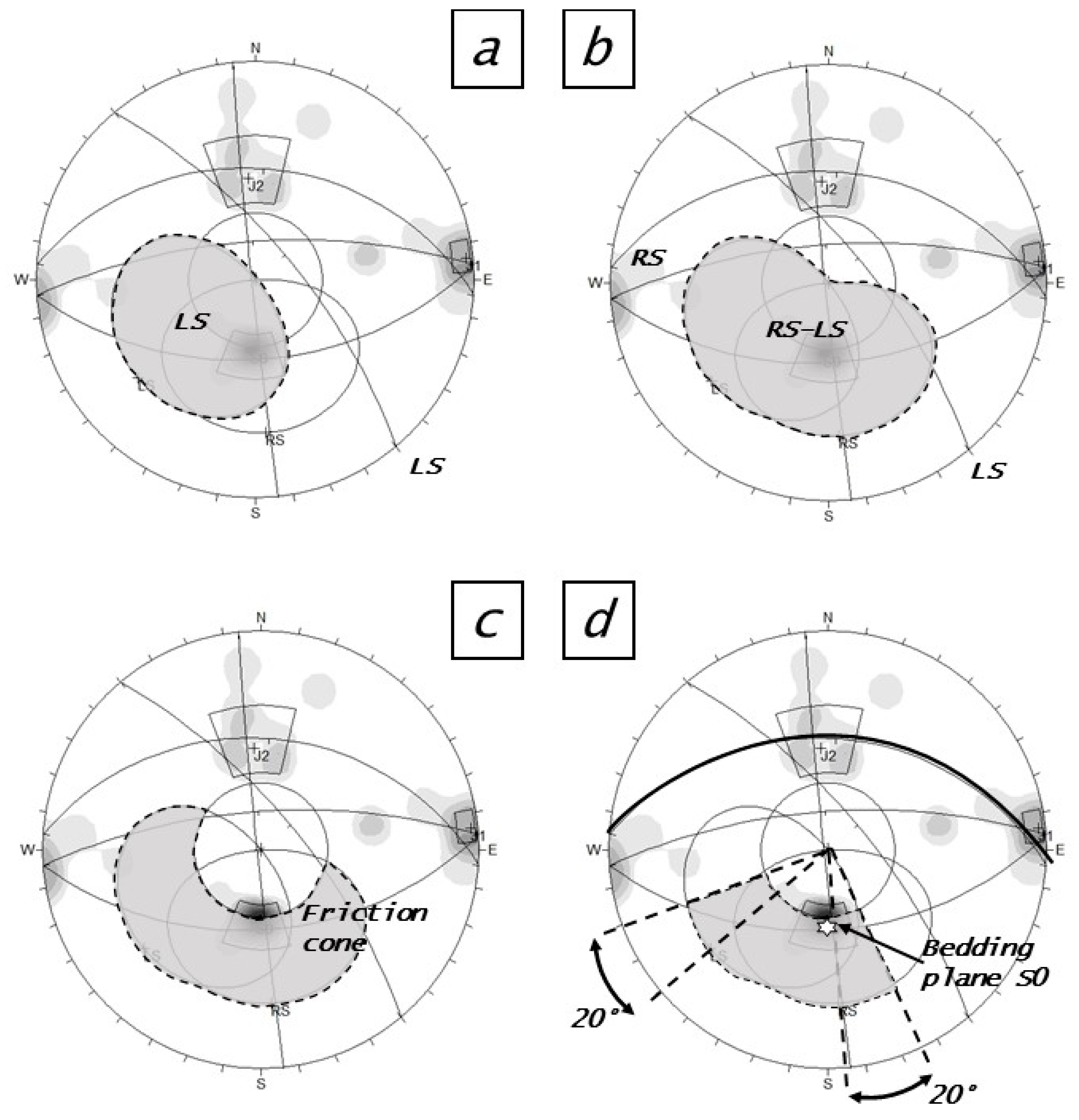
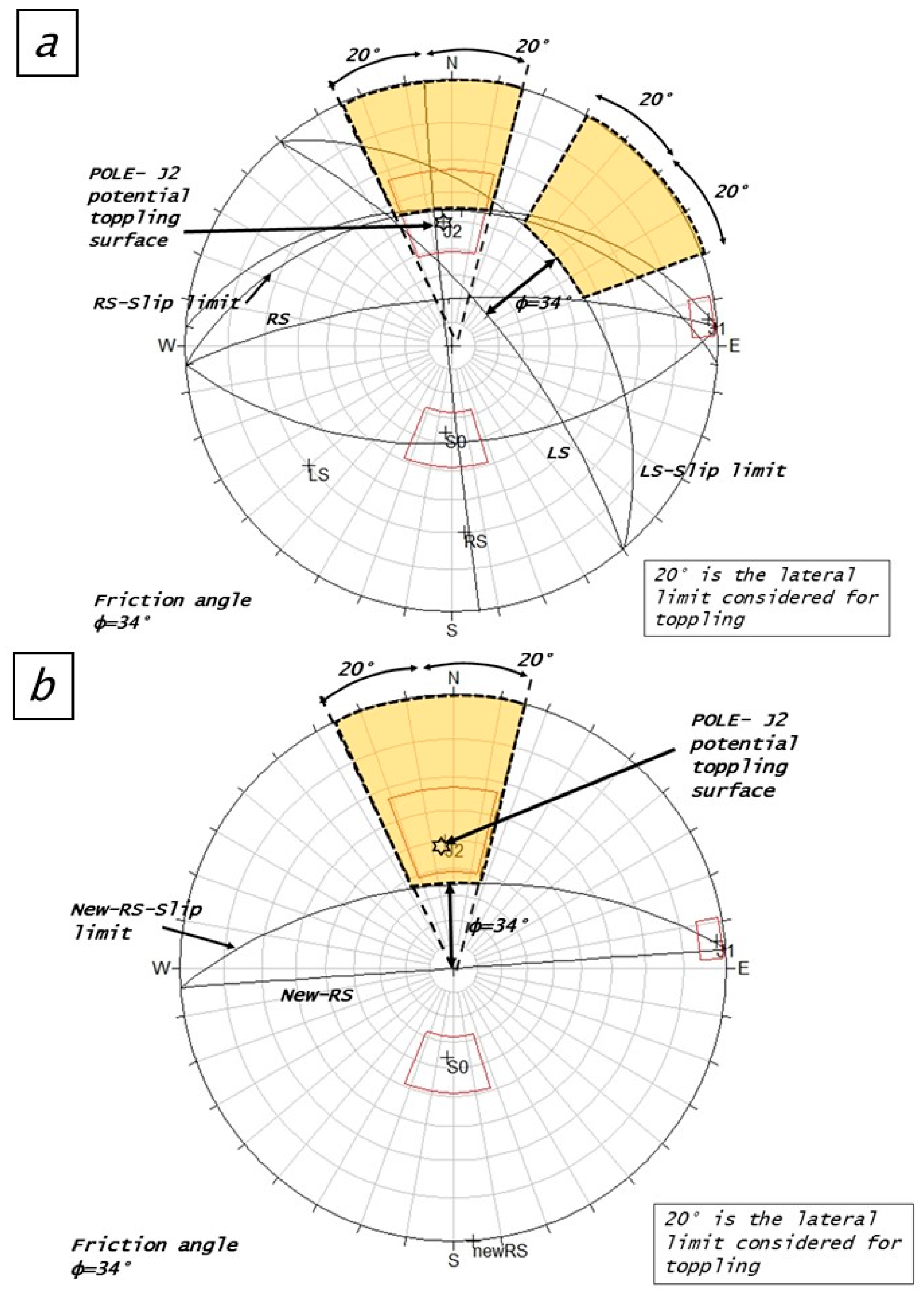
| Join Set | Kind of Joint | Dip Dir (Degrees) | Dip (Degrees) | K Fisher Statistical Distribution | Joint Cohesion and Friction |
|---|---|---|---|---|---|
| S0 | Stratification-sliding surface | 004° | 36° | 106 | C = 0 φ =34° |
| J1 | Joint | 264° | 88° | 2816 | |
| J2 | Joint—tensión crack | 176° | 50° | 38 |
Disclaimer/Publisher’s Note: The statements, opinions and data contained in all publications are solely those of the individual author(s) and contributor(s) and not of MDPI and/or the editor(s). MDPI and/or the editor(s) disclaim responsibility for any injury to people or property resulting from any ideas, methods, instructions or products referred to in the content. |
© 2023 by the authors. Licensee MDPI, Basel, Switzerland. This article is an open access article distributed under the terms and conditions of the Creative Commons Attribution (CC BY) license (https://creativecommons.org/licenses/by/4.0/).
Share and Cite
Borja Bernal, C.P.; Jordá Bordehore, L. Application of the Kinematic Assessment of Multi-Faced Slopes Using Stereographic Projection: The Case Study of a Planar Failure on the Spondylus Coast, Ecuador. Appl. Sci. 2023, 13, 8245. https://doi.org/10.3390/app13148245
Borja Bernal CP, Jordá Bordehore L. Application of the Kinematic Assessment of Multi-Faced Slopes Using Stereographic Projection: The Case Study of a Planar Failure on the Spondylus Coast, Ecuador. Applied Sciences. 2023; 13(14):8245. https://doi.org/10.3390/app13148245
Chicago/Turabian StyleBorja Bernal, Cesar Patricio, and Luis Jordá Bordehore. 2023. "Application of the Kinematic Assessment of Multi-Faced Slopes Using Stereographic Projection: The Case Study of a Planar Failure on the Spondylus Coast, Ecuador" Applied Sciences 13, no. 14: 8245. https://doi.org/10.3390/app13148245
APA StyleBorja Bernal, C. P., & Jordá Bordehore, L. (2023). Application of the Kinematic Assessment of Multi-Faced Slopes Using Stereographic Projection: The Case Study of a Planar Failure on the Spondylus Coast, Ecuador. Applied Sciences, 13(14), 8245. https://doi.org/10.3390/app13148245






